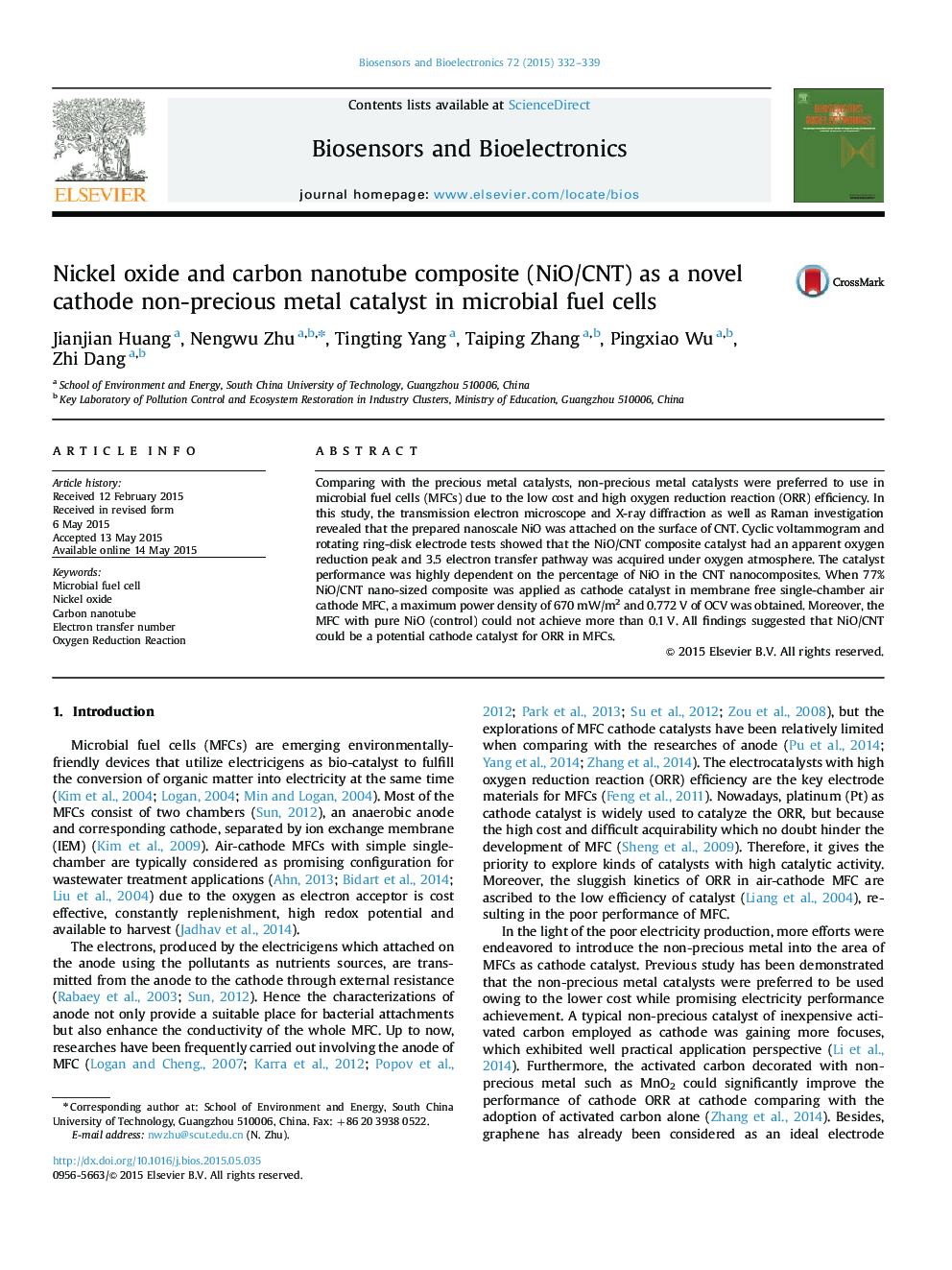| Article ID | Journal | Published Year | Pages | File Type |
|---|---|---|---|---|
| 866332 | Biosensors and Bioelectronics | 2015 | 8 Pages |
•This is the first attempt to adopt NiO/CNTs to highly catalyze ORR at the cathode.•The 3.5 electron transfer pathway was acquired for NiO/CNT electrocatalysts.•MFC with 77% NiO/CNT owned the maximum power density of 670 mW/m2 and 0.772 V of OCV.•The increase of MFC performance was directly proportional to the growth of the concentration of NiO in CNT.•NiO/CNTs could be a potential cathode catalyst for ORR in MFC.
Comparing with the precious metal catalysts, non-precious metal catalysts were preferred to use in microbial fuel cells (MFCs) due to the low cost and high oxygen reduction reaction (ORR) efficiency. In this study, the transmission electron microscope and X-ray diffraction as well as Raman investigation revealed that the prepared nanoscale NiO was attached on the surface of CNT. Cyclic voltammogram and rotating ring-disk electrode tests showed that the NiO/CNT composite catalyst had an apparent oxygen reduction peak and 3.5 electron transfer pathway was acquired under oxygen atmosphere. The catalyst performance was highly dependent on the percentage of NiO in the CNT nanocomposites. When 77% NiO/CNT nano-sized composite was applied as cathode catalyst in membrane free single-chamber air cathode MFC, a maximum power density of 670 mW/m2 and 0.772 V of OCV was obtained. Moreover, the MFC with pure NiO (control) could not achieve more than 0.1 V. All findings suggested that NiO/CNT could be a potential cathode catalyst for ORR in MFCs.
